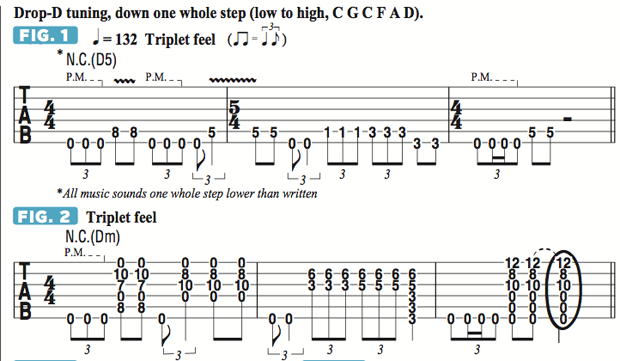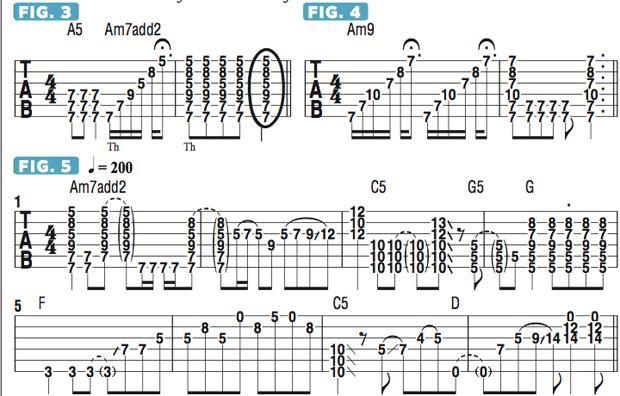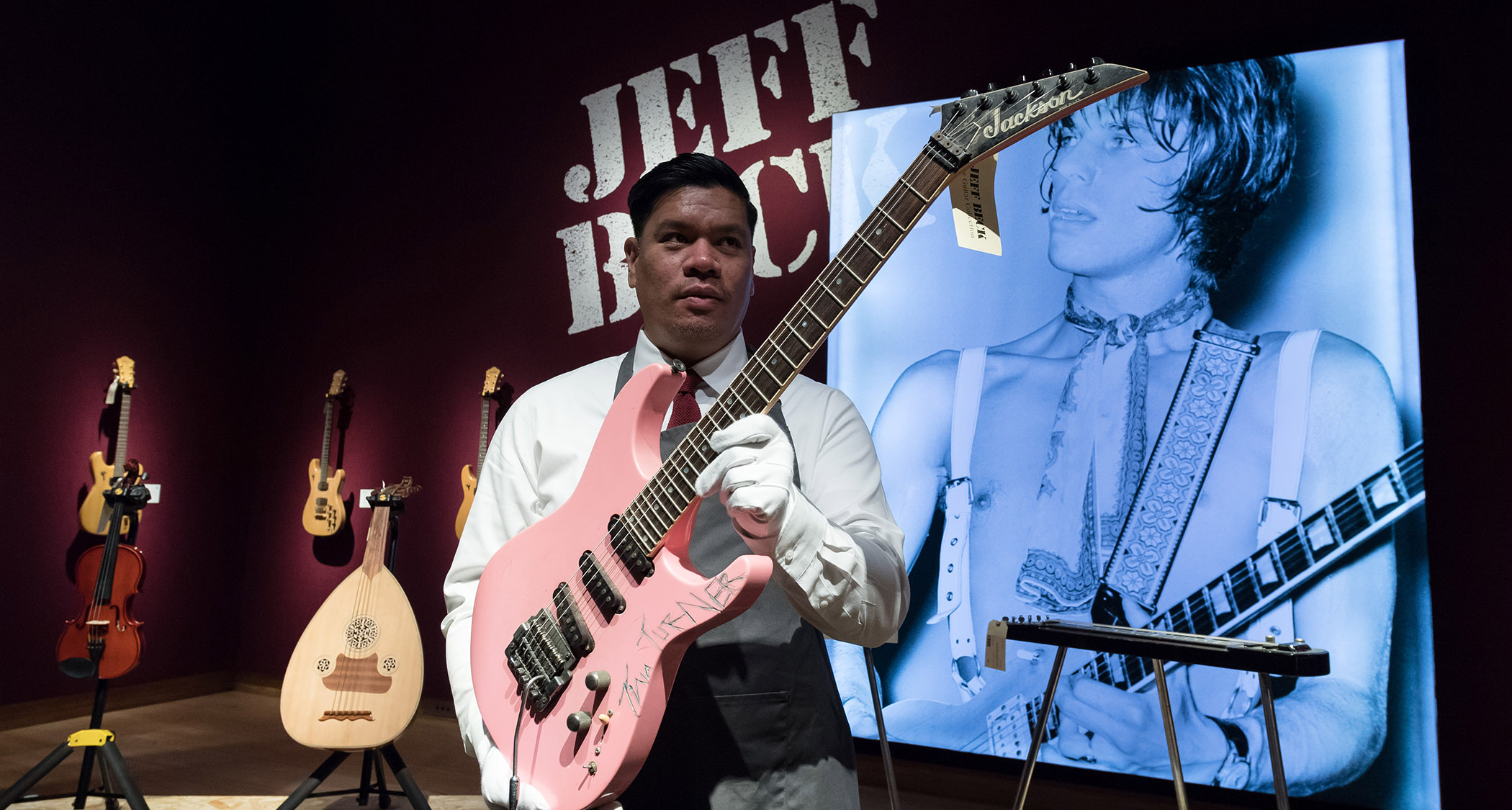Holcomb-Mania with Mark Holcomb: Building Chords Into Single-Note Riff Ideas — Video

Hello, and welcome to my new Guitar World column!
For this first entry, I’d like to discuss the way in which I approach using chords in conjunction with single notes in the formation of many of the riffs and guitar parts I write for Periphery and Haunted Shores.
In the past, most of my riff writing resulted in patterns built from single-note melodic lines. Once I began looking at alternative ways to inject chords into these single-note patterns, I discovered a whole new world of musical ideas, many of which have become staples of my approach to songwriting.
First off, I tune my guitar to drop-D, then additionally tune all six strings down a whole step (low to high, C G C F A D), so everything sounds a whole step lower than normal.
FIGURE 1 shows a single-note riff wherein an open sixth-string pedal tone is played against a simple melodic line fretted on the bottom two strings.
The figure is played with an eighth-note triplet feel, which means that the two eighth notes on each beat are played as if they were the first and third notes of an eighth-note triplet, resulting in a lopsided “dah-da” type rhythm. Occasionally, as on beat two of bar 2, I change up the rhythm so that the shorter eighth note (“da”) falls on the downbeat and the longer eighth note (“dah”) falls on the upbeat. Another slight twist in the riff comes via the insertion of an extra beat in bar 2, as indicated by the 5/4 time signature.
Now let’s transform this single-note idea into one that includes some dense chords. As shown in FIGURE 2, I begin with the same open-sixth-string pedal-tone figure, but then, instead of playing a single F note on beat 2, I play a five-note chord built on that note, which includes two D notes an octave apart, plus a high fretted A and the open high E string, and could be analyzed as Dm(add2)/F.
All the latest guitar news, interviews, lessons, reviews, deals and more, direct to your inbox!
On beats three and four, I swap out the D single notes from the original figure for a chord that may be analyzed as Dm(add2-4). On beats three and four of bar 2, I allude to the Bb and C single notes from FIGURE 1 with Bb5 and F5 double-stops (two-note chords) played in a higher octave. Bar 3 ends with a dense Dm(add4-9) chord voicing played across all six strings.
FIGURES 3 and 4 demonstrate ways in which I will typically build “stacked” voicings upon a foundational power chord to create richer, more complex harmony. Instead of playing a low A5 chord, I will often instead use a “spread” voicing across all six strings to create chords like Am7add2, as shown in FIGURE 3, or Am9, as in FIGURE 4. As you can see, drop-D tuning lends itself well to this approach.
FIGURE 5 offers a longer example built from a series of thick-sounding chords such as these. The initial Am7add2 chord in bar 1 gives way in bar 3 to higher A7(no3) and C5 voicings, followed in bar 4 by strummed G5 chords and then an unpredictable single-note figure that describes an Fmaj9 sound. The figure ends with some legato hammer-ons and finger slides, used to create a smooth, slippery sound.


